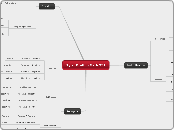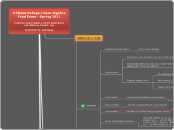Tyler Bratton Math 251
Integers
Division
Negative / Positive
Positive / Negative
Negative / Negative
Positve / Positive
Negative * Positive
Positive * Negative
Negative * Negative
Positive * Positive
Subtraction
Negative - Positive
Positve - Negative
Negative - Negative
Positive - Positive
Positive or Negative
Addition
Negative + Positive
Negative or Posiitive
Positive + Negative
Negative or Positive
Negative +Negative
Negative
Posiitve + Positive
Positive
Division
Using Multiplication
Using the smaller number to find its multiples until the larger number is reached, a guess and check using mulitiplication
Partial Quotients
Using the "long seven" method guess multiples and then subract to get easier numbers to work with
Area Model
Repeated Subtraction
48/6 6,6,6,6,6,6,6,6
Drawing the smaller number as whole pieces until the amount of them reaches the larger number
Number Bonding
1512/3 1512 can be broken down to 1500 and 12 which are easy to divide 3 by
Breaking down the larger number to multiples of the smaller one
Multiplication
Models
Ratio Table
A table is drawn one number is slowing multiplied by smaller number until then other number is reached to easily find the answer
Partial Products
Like the traditional model except the zero is not dropped, the intagers are multiplied then added up at the end
Tree/Combinations Model
Array/Area Model
Drawing a box with the height one number and the width the other, breaking them down to solve the area
Repeated Addition Model
4*3=4+4+4
Drawing out one number by the amount of another
Properties
Distributive Property
a(b+c)=(a*b)+(a*c)
Identity Property
a*1=a
Associative Property
a(b*c)=(a*b)c
Communitive Property
a*b=b*a









